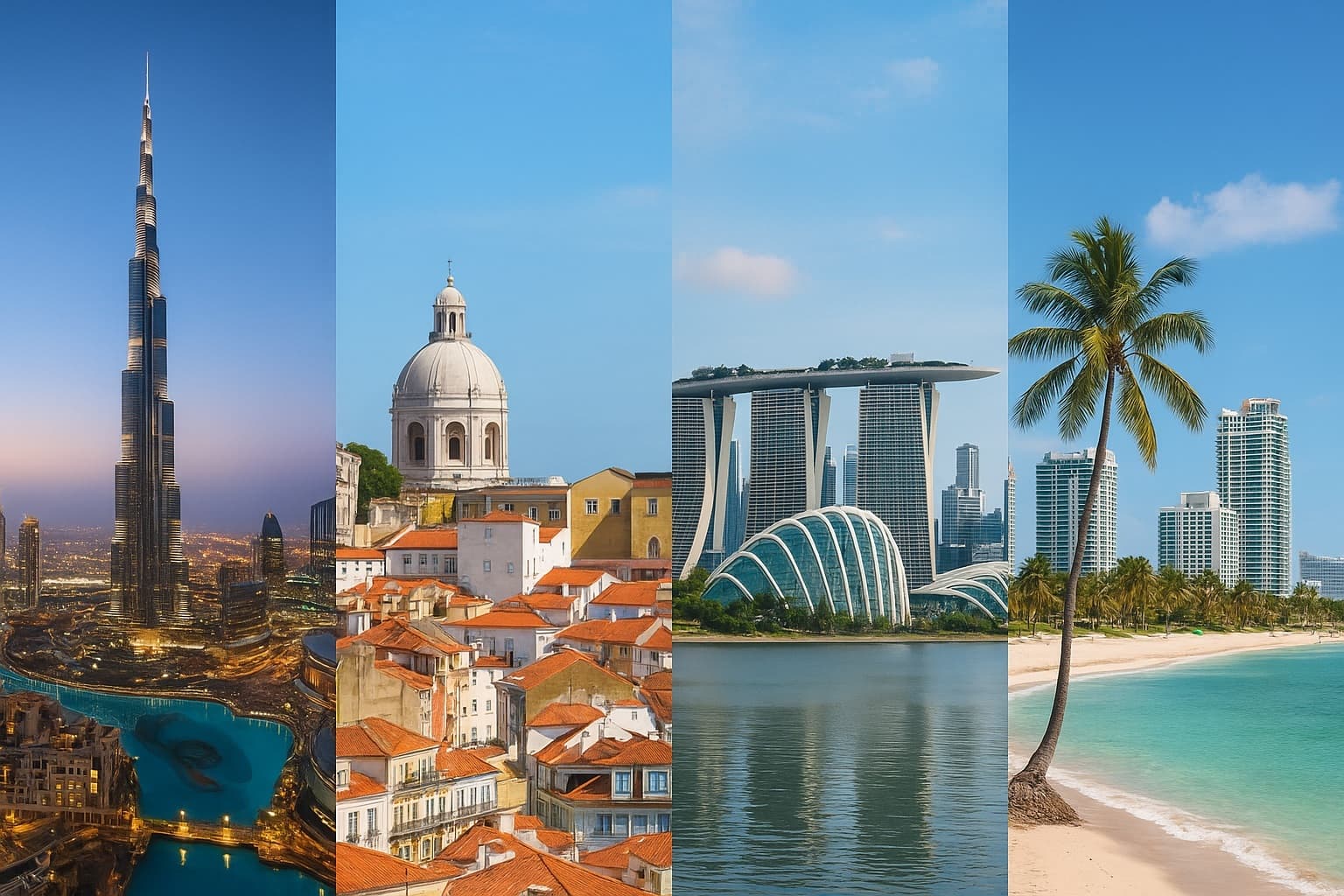Ask GRAI Anything
Your Real Estate Questions, Answered Instantly via Chat


Help us make GRAI even better by sharing your feature requests.

In 2025, the international real estate market is being shaped less by local wage growth or mortgage rates - and more by global capital flows. For investors, the lesson is clear: if you want to understand where housing prices and rental yields are headed, follow the money.
This article provides global real estate insights into how foreign buyers and institutional flows are transforming cities from Dubai to Miami, Singapore to Lisbon. It also shows how investors can leverage AI in real estate through tools like GRAI, an AI-powered real estate advisor, to model and anticipate these shifts.
For wealthy individuals, family offices, and sovereign capital, property has become more than a place to live - it’s:
A currency hedge against inflation or devaluation in their home market.
A safe haven in politically or economically stable jurisdictions.
A luxury asset class, competing with fine art, equities, or private equity.
This shift explains why local affordability narratives often diverge from actual price trends. In cities where local incomes could never support million-dollar apartments, prices continue to rise because global wealth sets the floor.
Dubai: A Pure Play on Global Migration
With 90% of residents as expats, Dubai represents the clearest case of real estate as a global asset class. Russian inflows in 2022, Indian and Chinese demand in 2023–24, and continued relocations from Western professionals in 2025 have pushed luxury sales to record levels.
Prime property prices are up nearly 16% YoY in early 2025.
Mid-market housing has lagged, with affordability stretched.
For global investors, Dubai demonstrates the power of following migration + capital flows rather than domestic fundamentals.
Related: Dubai Real Estate Market in 2025: The Ultimate Investor's Guide with GRAI
Singapore: Policy Friction Meets Persistent Demand
Despite government cooling measures, including a 60% Additional Buyer’s Stamp Duty (ABSD) for foreigners, Singapore remains a magnet for Chinese, Indonesian, and global buyers seeking stability.
Luxury rents are still 30% above pre-COVID levels.
The ABSD has slowed some speculative buying, but safe-haven demand persists.
For investors seeking international property insights, Singapore highlights how policy can slow but rarely stop global capital inflows.
Lisbon & Southern Europe: Lifestyle Meets Capital Flight
Golden visa programs in Portugal and Spain have been restricted, but the flows continue.
Americans and Middle Eastern buyers are still reshaping Lisbon’s historic neighborhoods.
In Barcelona and Athens, short-term rental demand layered on top of foreign buying has pushed locals out of the market.
This is a case study in how lifestyle, climate, and affordability combine to attract international buyers despite regulatory barriers.
Must Known: Lisbon Real Estate Market Trends in 2025 – AI Predictions & Investment Insights
Vancouver & Miami: The Western Hemisphere Play
Vancouver introduced a foreign buyer ban in 2023, yet international demand persists. Wealthy buyers are willing to pay the 20% surcharge as the “cost of entry” into a stable, high-demand market.
Miami, meanwhile, continues to see inflows from Latin America, with political and economic volatility in the region driving capital into Florida condos.
In 2024-25, Miami ranked among the top five global cities for cross-border real estate flows.
Governments often frame policy in terms of affordability, but wealthy foreign buyers are insulated from these debates. For them, taxes and surcharges are simply part of the transaction cost.
For investors, the practical reality is this:
Luxury and prime markets: increasingly set by global wealth, not locals.
Mid-market and rental supply: where affordability pressures bite hardest, creating potential political backlash but also investor opportunity.
Safe havens: command premiums precisely because of geopolitical uncertainty elsewhere.
Traditional real estate analysis often lags behind these flows. But with AI in real estate, investors can model capital shifts across borders, anticipate demand shocks, and stress-test ROI in real time.
With GRAI, the global real estate AI advisor, you can run queries like:
“Forecast Dubai Marina ROI if expat inflows rise 15% in 2026.”
“Simulate Lisbon rental yields if US and Middle Eastern capital increases by 20%.”
“Test Vancouver condo absorption if foreign buyer restrictions tighten.”
“Compare Miami luxury ROI under rising Latin American inflows.”
These AI-powered international property insights help investors anticipate where capital is heading, rather than reacting after the fact.
Foreign buyers and global capital flows are not side stories in 2025 - they are the main narrative of the international real estate market. For investors seeking a global property guide, the play is clear: ignore affordability headlines, and follow the flows of wealth.
With the right tools - especially an AI-powered real estate advisor like GRAI - investors can move from reactive to predictive, gaining an edge in one of the world’s most competitive asset classes.
Try it here: https://internationalreal.estate/chat